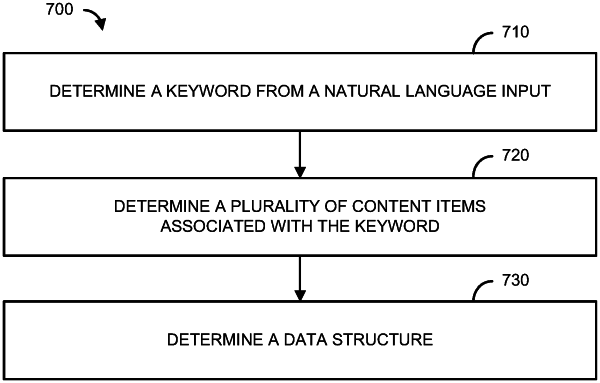| CPC G06Q 30/0201 (2013.01) [G06F 16/248 (2019.01); G06F 16/24578 (2019.01); G06F 40/30 (2020.01)] | 20 Claims |

|
1. A method comprising:
determining, by a computing device, based on a first natural language input received via a user interface during an analytics session, a keyword, wherein the first natural language input comprises the keyword;
generating, during the analytics session, at least one first content items comprising analytic content associated with the keyword;
generating, based on the first natural language input and the at least one first content item, a first data structure, wherein the first data structure associates the keyword and the at least one first content item with a first temporal value that is based on a time the at least one first content item was generated during the analytics session;
generating, based on a second natural language input associated with the first natural language input, a second data structure, wherein the second data structure associates the keyword and at least one second content item, comprising analytic content associated with the keyword, with a second temporal value that is based on a time the at least one second content item was generated during the analytics session, and wherein the second natural language input excludes the keyword; and
causing, based on the first data structure and the second data structure, the at least one first content item and the at least one second content item to be output at the user interface, wherein the output comprises a chronological arrangement of the at least one first content item and the at least one second content item based on the first temporal value and the second temporal value.
|